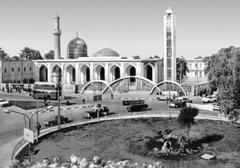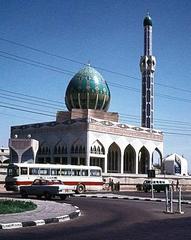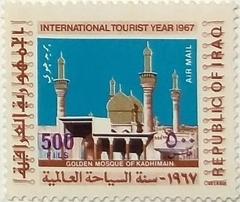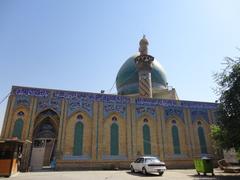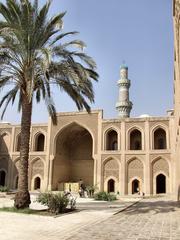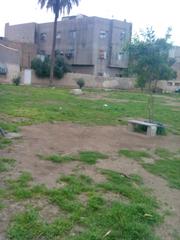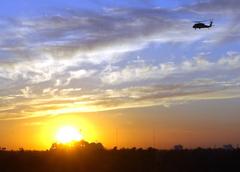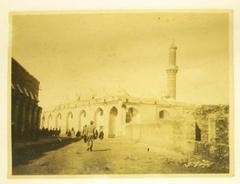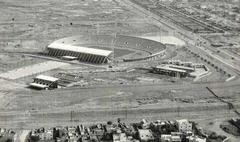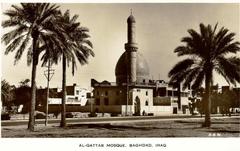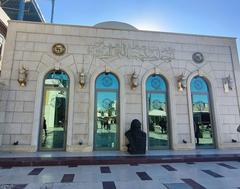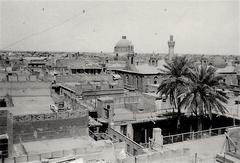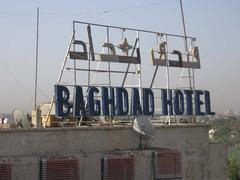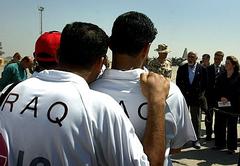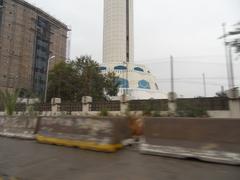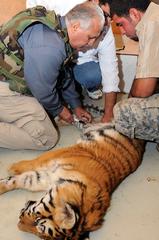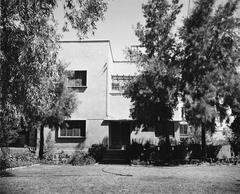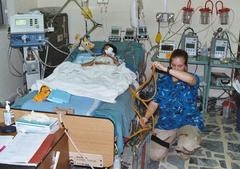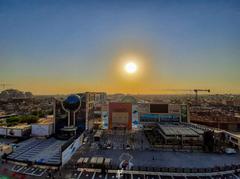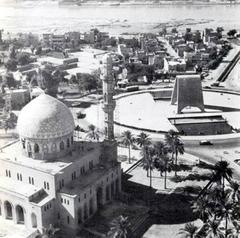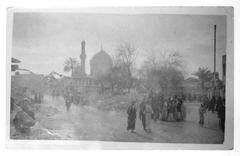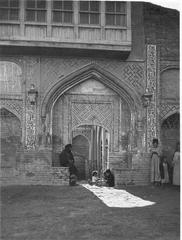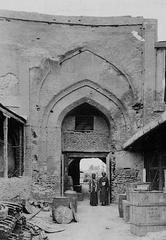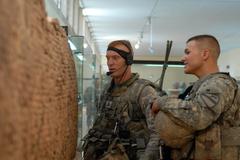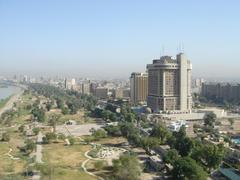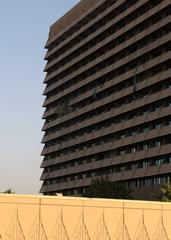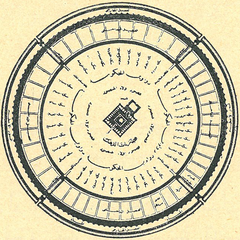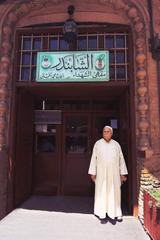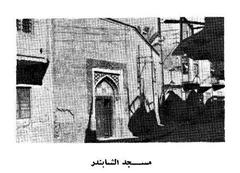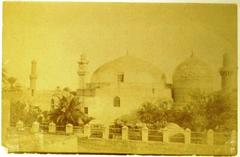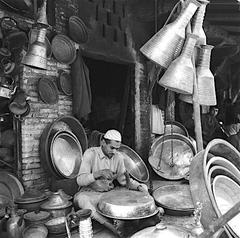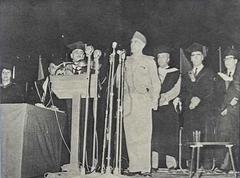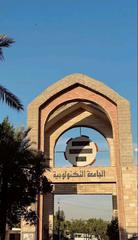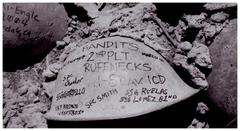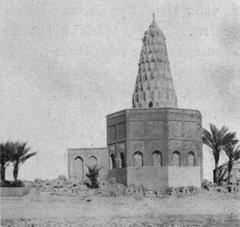Al-Wazeer Mosque: Visiting Hours, Tickets, and Historical Significance in Baghdad
Date: 14/06/2025
Introduction
Al-Wazeer Mosque, located in Baghdad’s historic Rusafa district, stands as a striking testament to Ottoman architectural mastery and the rich cultural heritage of Iraq’s capital. Constructed in 1599 AD under the patronage of Hassan Pasha, the mosque is both an active place of worship and a beacon of Baghdad’s resilience and spiritual continuity. Its ornate domes, slender minarets, and elaborate calligraphic details embody the fusion of Ottoman and traditional Baghdadi design. As a centerpiece in Baghdad’s historical landscape, Al-Wazeer Mosque offers visitors not only spiritual serenity but also a unique window into centuries of religious, social, and architectural evolution. This guide provides essential information for planning your visit, including opening hours, ticketing, accessibility, local customs, and practical safety tips, as well as insights into the mosque’s historical and cultural significance. For an enhanced experience, visitors can use digital resources like the Audiala app, which features interactive maps and virtual tours (UNESCO, Wikipedia, Aurica.ai).
Contents
- Visiting Information
- Hours and Tickets
- Accessibility and Tours
- Special Events and Activities
- Historical and Cultural Significance
- Origins and Development
- Architecture and Artistry
- Urban and Religious Role
- Preservation and UNESCO Status
- Community Life
- Influence on Arts and Identity
- Nearby Attractions
- Practical Travel and Safety Tips
- Frequently Asked Questions (FAQ)
- Key Dates and Facts
- Conclusion
- References
Visiting Information
Visiting Hours and Tickets
- Opening Hours: Al-Wazeer Mosque is generally open to visitors daily from 8:00 AM to 6:00 PM. Hours may be extended during religious festivals, while access may be restricted during main prayer times—especially Friday midday prayers and major Islamic holidays.
- Admission: Entry is free, reflecting the mosque’s religious function. Donations for maintenance and preservation are welcomed.
- Tours: Guided tours are available through local agencies and cultural organizations. The Audiala app offers self-guided virtual tours and interactive maps for independent travelers.
Accessibility and Visitor Facilities
- Getting There: The mosque is accessible via Baghdad’s public transport and taxis. Its location in the Rusafa district places it near other historical sites like Al-Mustansiriya School and Abbasid Palace.
- Accessibility: Some areas of the mosque may present challenges for visitors with mobility issues due to steps and uneven surfaces. Efforts have been made to improve accessibility, but it is advisable to arrange for assistance if needed.
- Visitor Tips: Dress modestly (shoulders, arms, and legs covered; women should bring a headscarf). Remove shoes before entering prayer halls. Photography is generally permitted in the courtyard and exterior, but always ask for permission before photographing interiors or worshippers.
Special Events and Cultural Activities
Throughout the year, Al-Wazeer Mosque hosts religious ceremonies, lectures, educational workshops, and cultural gatherings, particularly during Islamic holidays. These events provide immersive opportunities to experience Baghdad’s living heritage. Consult local listings or the Audiala app for event schedules.
Historical and Cultural Significance
Origins and Historical Development
Al-Wazeer Mosque, also known as the Minister’s Mosque, was constructed in 1599 AD (1008 AH) by Hassan Pasha, the Ottoman wali (governor) of Baghdad. The mosque was designed to solidify Ottoman influence through monumental religious infrastructure. Significant restorations occurred in the mid-17th century and again in 1686 AD, ensuring the mosque’s continued prominence. Despite damages sustained during periods of conflict, the mosque’s enduring presence highlights the resilience of Baghdad’s cultural heritage (UNESCO, Aurica.ai).
Architectural Features and Artistic Heritage
Al-Wazeer Mosque showcases classic Ottoman design elements: a prominent glazed tile-covered dome, a round minaret with a spiral staircase, and a combination of yellow brickwork and blue-glazed wooden doors. The mosque’s façade and interior are adorned with intricate tile mosaics, Quranic calligraphy, and geometric patterns. The spacious prayer halls, muqarnas (stalactite-like decorations), and a lush riverside garden reflect both Ottoman and local Baghdadi influences (Wikipedia, Trek Zone).
Urban and Religious Role
Situated near the Tigris River and the bustling Souk al-Sarai, the mosque has long served as a religious, educational, and social hub for Baghdad’s residents. Its proximity to other landmarks like Al-Mustansiriya School and Abbasid Palace creates a culturally rich cluster in the historic city center (UNESCO).
Preservation and UNESCO Status
Al-Wazeer Mosque is protected under Iraq’s Antiquities Law No. 36 of 1924 and has been included on UNESCO’s Tentative List as part of the “Historical Features of the Tigris River in Baghdad Rusafa” since 2014. This recognition underscores the mosque’s importance and supports ongoing conservation efforts (Archiqoo).
Community and Spiritual Life
The mosque remains an active site for daily prayers, religious education, and community gatherings. It symbolizes unity and resilience, serving both Sunni and Shia communities and playing a vital role in Baghdad’s spiritual life (Aurica.ai).
Influence on Arts, Literature, and Identity
Al-Wazeer Mosque has inspired poets, artists, and writers, featuring prominently in narratives that celebrate Baghdad’s legacy as the “City of Peace.” It is also referenced in classical tales such as “One Thousand and One Nights” (UNESCO).
Nearby Attractions
Enhance your visit to Al-Wazeer Mosque by exploring these nearby cultural sites:
- Al-Mustansiriya School: A renowned medieval Islamic university.
- Abbasid Palace: Remnants of Baghdad’s golden age under the Abbasid Caliphate.
- Al-Mutanabbi Street: Famous for its book market and literary cafes.
- Souk al-Sarai: Traditional market known for crafts and local goods.
- National Museum of Iraq: Showcasing Mesopotamian artifacts.
- Tigris River Promenade: Offers scenic views and a tranquil atmosphere.
Practical Travel and Safety Tips
Security and Health
Baghdad’s security situation can fluctuate. Travelers should:
- Check government travel advisories before departure (Travelermania, Rocky Road Travel).
- Use guided tours or trusted local contacts.
- Avoid large gatherings or demonstrations, especially during Friday prayers or religious holidays.
- Bring bottled water and ensure you have basic medical supplies.
- Carry passport copies and necessary permits; expect security checks at mosque entrances.
Cultural Sensitivity
- Dress modestly; women should cover hair, arms, and legs.
- Remove shoes before entering prayer halls.
- During Ramadan, refrain from eating or drinking in public during daylight.
- Greet staff and worshippers respectfully; “As-salamu alaykum” is appreciated.
- Photography is allowed in the courtyard and exterior, but always ask before photographing interiors or people.
Accessibility
- The mosque’s historic design may pose challenges for those with limited mobility. Arrange assistance in advance if needed.
- Facilities such as restrooms and ablution areas are available, but visitor centers and gift shops are not.
Frequently Asked Questions (FAQ)
Q: What are the mosque’s opening hours?
A: 8:00 AM to 6:00 PM daily, with variations during religious events and prayer times.
Q: Is there an entry fee?
A: No, entry is free; donations are encouraged for upkeep.
Q: Are guided tours available?
A: Yes, through local operators and cultural organizations, and via the Audiala app.
Q: Is the mosque accessible to people with disabilities?
A: Some areas may be challenging; limited accessibility due to historic architecture.
Q: Can non-Muslims visit?
A: Yes, outside main prayer times and not during Friday midday prayers or major religious holidays.
Q: Is photography allowed?
A: In the courtyard and exterior; ask for permission inside.
Q: What nearby attractions can I visit?
A: Al-Mustansiriya School, Abbasid Palace, Al-Mutanabbi Street, and more.
Key Dates and Facts
- Construction: 1599 AD (1008 AH) by Hassan Pasha (UNESCO)
- Major Restorations: 1642–1644 AD and 1686 AD
- Location: Rusafa district, Baghdad, Iraq
- Architectural Style: Ottoman and Baghdadi influences; features domes, minarets, intricate tilework
- UNESCO Tentative List: Since 2014 (Archiqoo)
- Legal Protection: Iraqi Antiquities Law No. 36 of 1924
Conclusion
Al-Wazeer Mosque endures as one of Baghdad’s most treasured historical landmarks, uniting architectural beauty, spiritual significance, and cultural resilience. Open daily to visitors, it invites everyone—from history enthusiasts to spiritual seekers—to explore its storied halls, tranquil gardens, and vibrant community life. For an optimal visit, respect local customs, follow safety protocols, and consider using modern tools like the Audiala app for enriched exploration. Nearby attractions such as Al-Mustansiriya School, Abbasid Palace, and the lively markets of Rusafa further enhance your journey into Baghdad’s rich heritage.
For current updates, travel advisories, and event information, consult official sources or reliable digital guides.
References
- Al-Wazeer Mosque in Baghdad: Visiting Hours, Tickets, and Cultural Significance, 2024, Aurica.ai
- Al-Wazeer Mosque, 2024, UNESCO Tentative List
- Al-Wazeer Mosque, 2024, Wikipedia
- Visiting Al-Wazeer Mosque in Baghdad: Hours, Tickets, History, and Travel Tips, 2024, Trek Zone
- Baghdad Travel Tips, 2024, Travelermania
- Al-Wazeer Mosque Visiting Hours, Safety Tips, and Nearby Attractions in Baghdad, 2024
- Al-Wazeer Mosque Photography and Visitor Guidelines, 2024, The Islamic Information
- Baghdad Travel Guide, 2024, Rocky Road Travel
- Blue Mosque Dress Code Guide
- The Tourist Checklist: Things to Do in Baghdad
